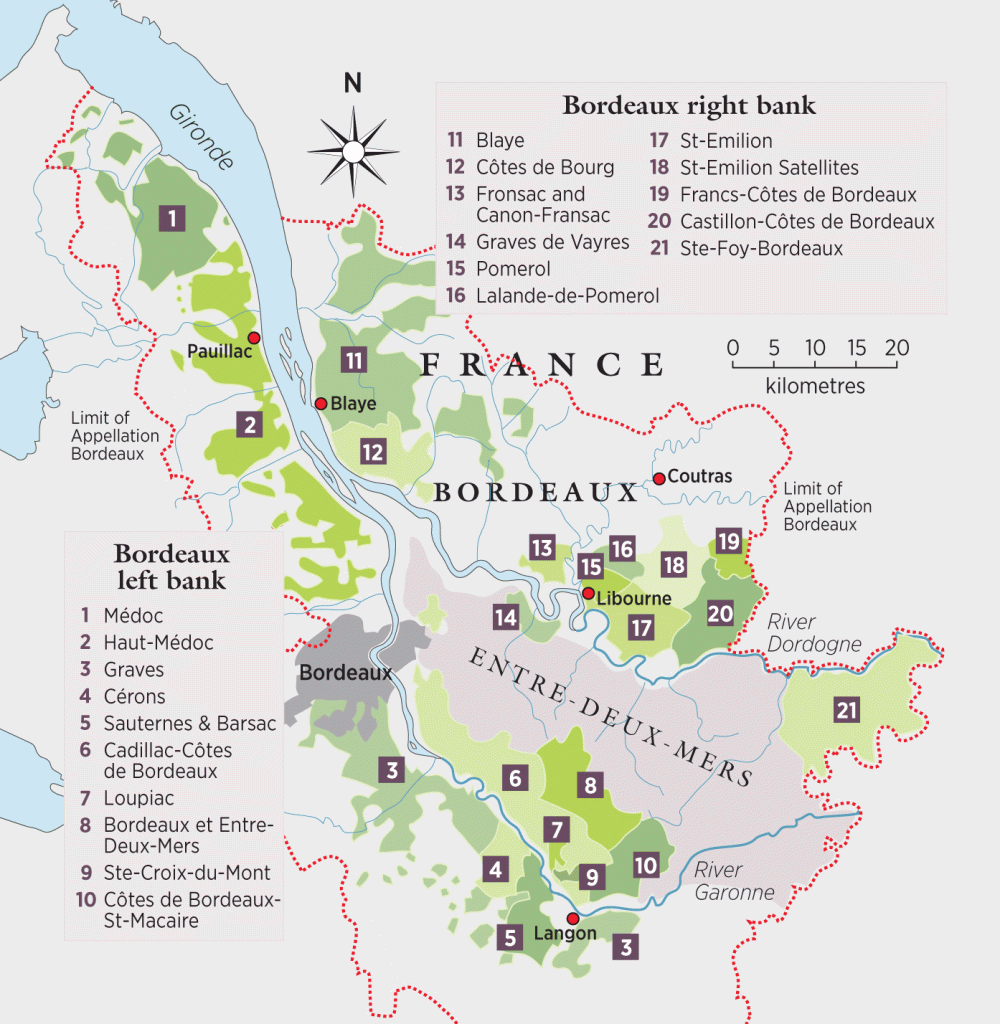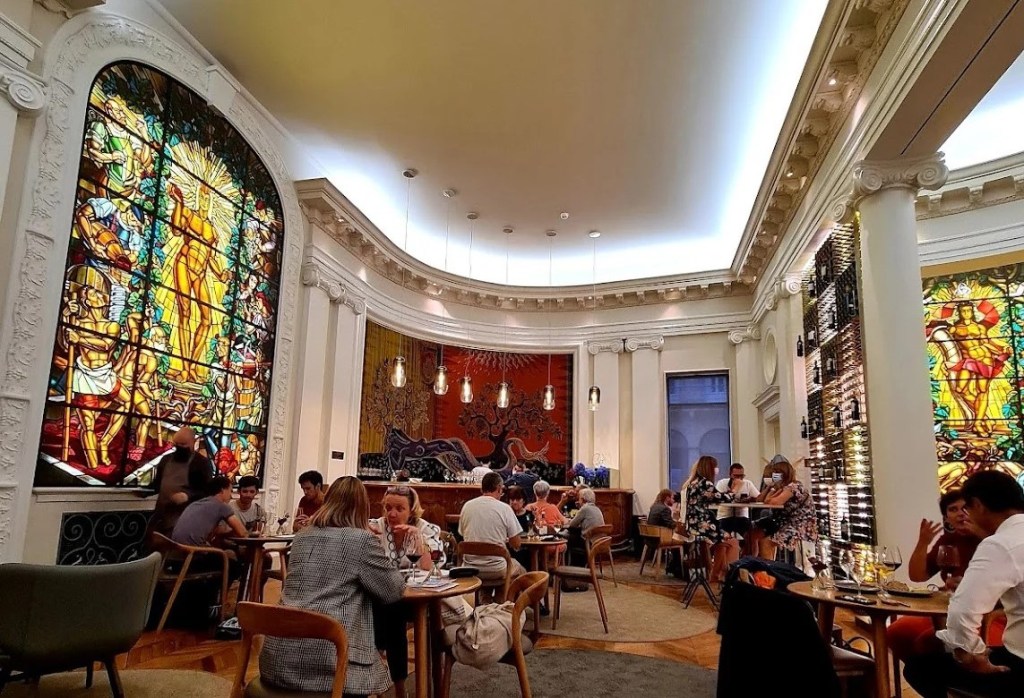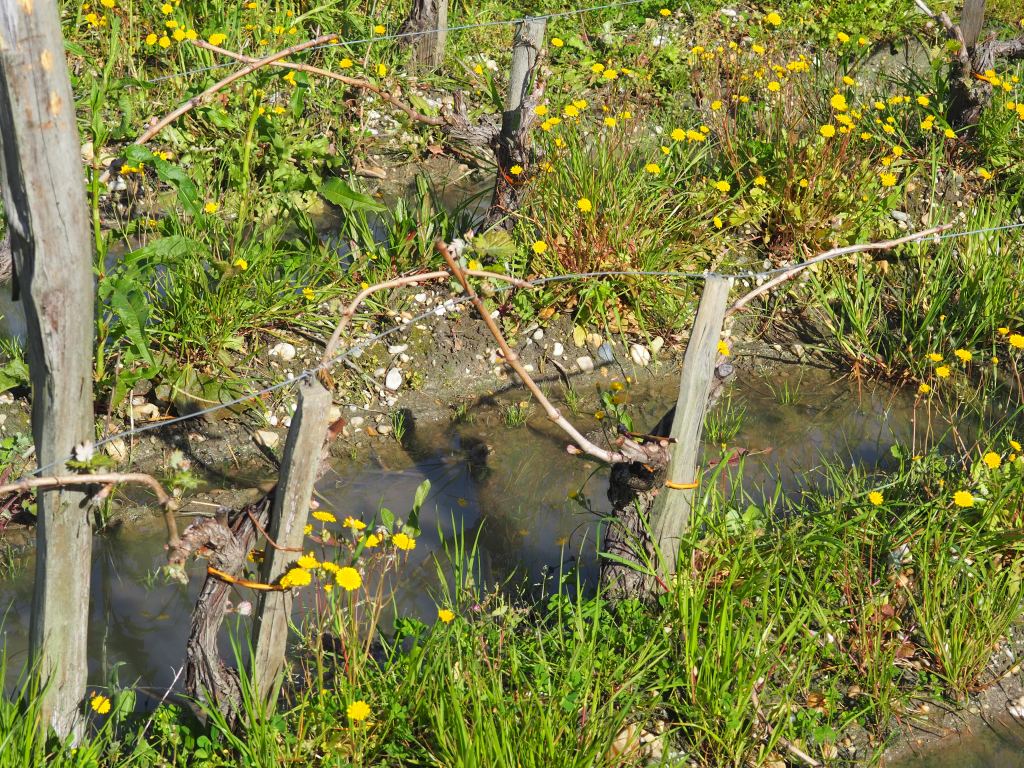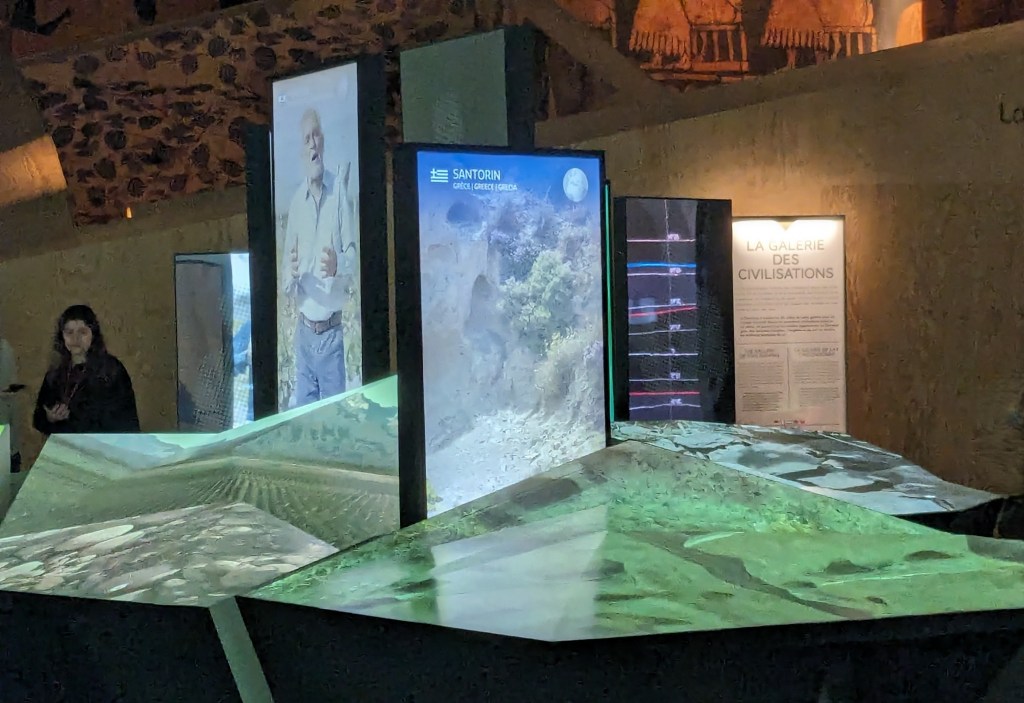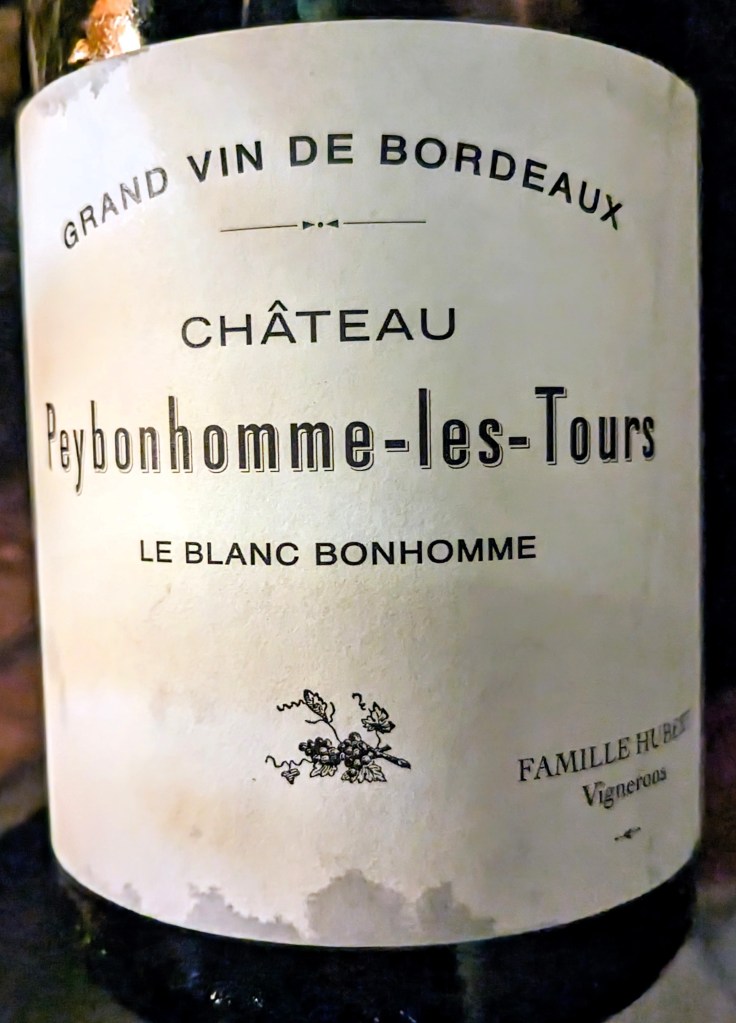3. Bordeaux – La Cité du Vin?


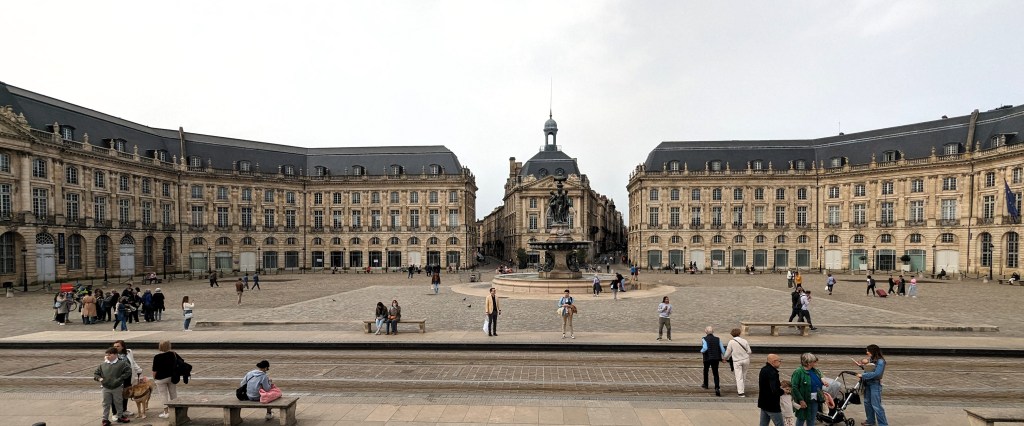
It had been thirty years since I last visited what is probably the most famous wine centre in the world. During that time Bordeaux has been rather eclipsed by Burgundy in terms of most sought after wines but it remains the home of celebrated chateaux whose bottles carry huge price tags. It is also fair to say that in the last 15 years or so Bordeaux has fallen out of fashion with those of us who enjoy natural wines and alternative grape varieties to Cabernet and Merlot in particular. Nonetheless I still enjoy Bordeaux wines and a few days in the city and Médoc provided an opportunity to explore a much changed city and wine heartland with its dramatic and legendary chateaux.
In recent times I have enjoyed Bordeaux wines from the likes of Chateau Le Puy and Ormiale at the Dynamic Wines event and Le Puy’s Emilien 2020 was my wine of the year for 2023. So, it is fair to say that the region’s wines have been steadily working themselves back in to my affections. I had no appointments with winegrowers, the trip to Bordeaux was more about enjoying the city itself. However, in the course of the five days I did enjoy some local wines in restaurants and wine bars.
One wine which was certainly an unexpected pleasure was of all things a rosé Crémant de Bordeaux called Célène Cuvée Royale, a blend of Cabernet Franc (the grape which is following me everywhere this year) and Merlot though some sites say there is some Muscadelle too. Made in the Entre-Deux-Mers this was a very refreshing glass with plenty of red fruit aromas and flavours, ideal after a long walk on a warm day. Crémant de Bordeaux does seem to be having its moment, with some good bottles around. This was enjoyed at the École du Vin right opposite the Tourist Information and Grand Théâtre in the centre of Bordeaux, a lovely building with stained glass windows and various wines and tasting plates on offer. I also enjoyed a glass of red from Cadillac, south east of the city, called Originel from Chateau Ste. Cathérine. I was told the wine was made naturally though I can’t find any evidence online of this but it was very pleasing with ripe Merlot and Cabernet Franc (!) fruit, fresh and lengthy in the mouth. What these wines showed was that there is a lot of unsung, good quality wine at reasonable prices from the area.
I chatted with a couple of wine professionals during my stay and the topic of organics came up. Both said that there are many producers now working to organic and biodynamic principles but not being certified. The main reason for this, they suggested, was the wet weather in this region so close to the Atlantic Ocean. In a wet Spring many wanted the option to be able to spray whatever they deemed necessary to combat mildew and other problems. I understand that, obviously not ideal from my point of view, but they have to safeguard their income. I was also told that there are some chateaux owned by older generations who have transferred the running of their property to younger vignerons who tend to have more sympathy for organic practices. Indeed I even found some natural wines!
One example is this bottle which I found in a wine shop in Margaux (a village without much else in it). Made at Ch. Haut-Bages Libéral, a Fifth Growth classed Grand Cru, Ceres is organic and made without sulfites by the Lurtons who also own biodynamic estates such as Ch. Ferrière. I have yet to open the bottle and will report back but it was good to see major producers embracing modern, responsible ways of winemaking.
La Cité Du Vin opened in 2016 and provided plenty of information and fun for a full half day. It is very modern in its use of interactive displays, film and digital activities. There were video interviews with winemakers around the world set on displays about their terroir, rooms showing items on the history of wine, the winemaker’s year and how wine is made. A sensory section showed how wine aromas can be identified and matched, how senses affect mood and wine tasting.
It was all designed for a more general audience but there were plenty of nuggets of information to keep me happy too. I would also commend their wine shop, which had wines from all corners of the world, you don’t see many Japanese, Mexican or Indian wines in most shops but they were available here and the prices of wines I recognised were all fair. The brasserie provided a good lunch, the restaurant is supposed to be very good. Well worth a visit.
A trip to Bordeaux would also not be complete without a visit to the vineyards. I have visited St. Émilion a number of times and it is a lovely village but this time I wanted to tour the Médoc, the left bank. I had done so once many years ago but it’s always fun to see the famous chateaux with names which are so familiar from when I was first learning about wine. I drove around but the tourist information office can easily organise tours in groups of various sizes and there were plenty of private companies in evidence too. I would advise to reserve a tour if that is the way you are going, the tourist information visits were well booked up and this was in April. I would also reserve any visits to a chateau that you may wish to enjoy. I found it frustrating that many places advertised as open (even on the door) were not at all. There have been improvements in oenotourism in the Médoc but there is some way to go still.
It was noticeable that the main châteaux had large teams of workers out in the vineyards, in common with my visit to Burgundy last year. The high prices means bigger teams can be afforded which they hope will bring better wines. As with the Loire the common practice was double Guyot vine pruning and to leave a grass covering. With such wet soils it was difficult to really examine the famous soils and the gravelly soil from the proximity to river and sea.
Why do I go on about grass covering etc? Well, have a look at the next photo taken back in the Languedoc where I type this. This is a typical scene of vineyards with most cover taken away by herbicides etc. Here the philosophy is to maximise the yield not the quality, the co-op pays by tonnage. That’s why people like Jeff Coutelou are fighting to maintain flora and fauna in a sea of barren soils. And why it is good to see on the Médoc, where not all are rich, that they put their vineyard soils first. This photo was taken on a windy day with a lot of the topsoil just blowing about, the grass prevents such erosion as well as maintaining better drainage.
The other local wine of note that I tasted (I did try some others but nothing too remarkable) was a white wine and that fits a pattern of Bordeaux Blancs that I have enjoyed in recent times. Chateau Peybonhomme-les-Tours 21 is equal parts Sauvignon Blanc and Sémillon and there is a lovely freshness from the Sauvignon alongside a richness from the Sémillon, it really is a marriage from heaven. Excellent bottle.
I scratched the surface of the region with my visit in wine terms and I don’t even pretend that this article casts much light on the wines themselves. However, it was interesting to see how white, rosé and Crémant wines are reaching new heights and that, though rooted in history, winemaking is starting to change, led by successful châteaux like Pontet Canet. The city itself has been modernised beautifully, lovely for walking around, served by an excellent tram system and with so much to see. I would definitely recommend a visit whether you’re a Bordeaux wine fan or not.

